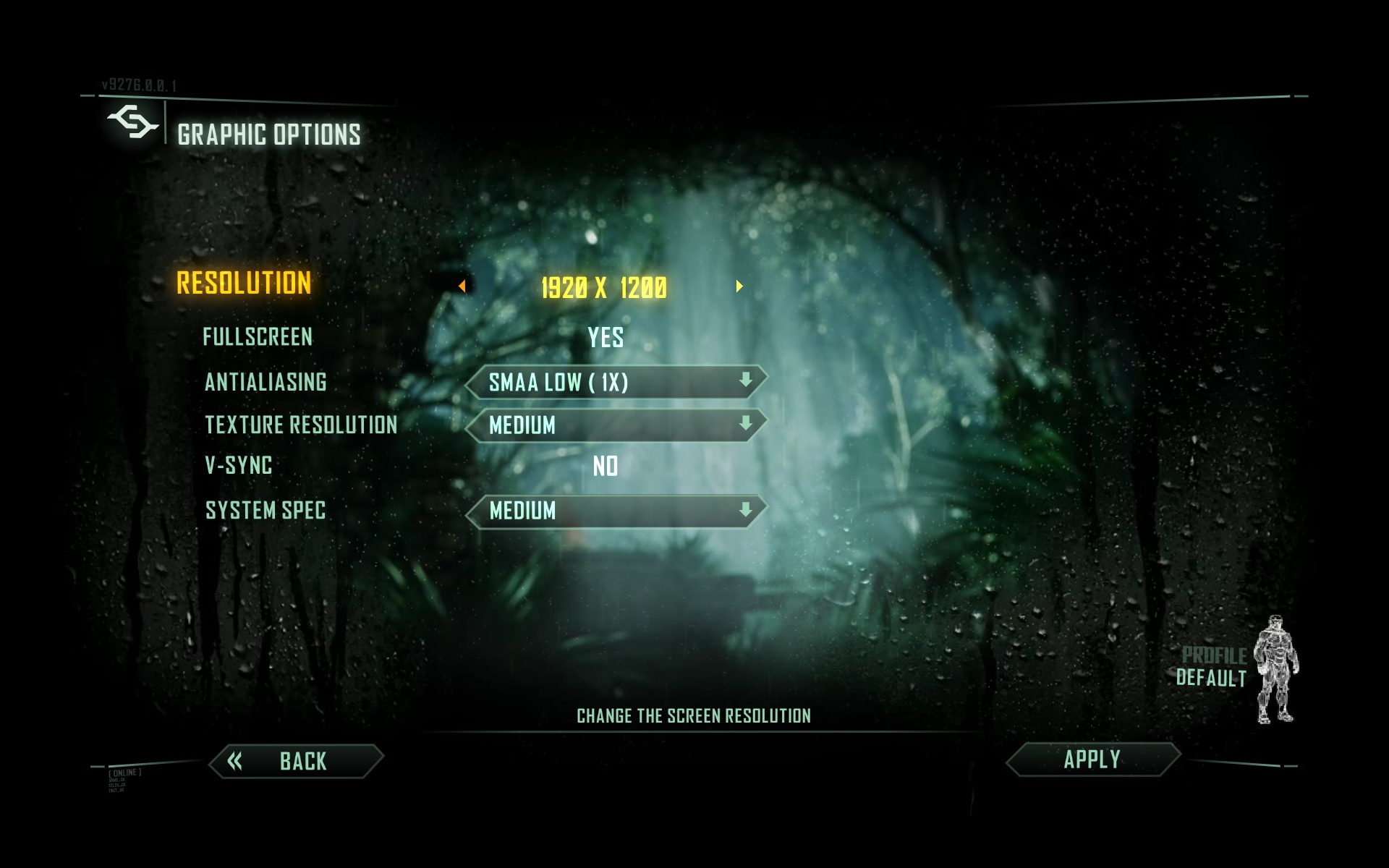

So I overclocked the CPU to 4.8GHz and ran the GPU at around 2000MHz, with a small boost to the VRAM clock, and that did the trick. 1080p with Very High quality went down easily, as did 1440p, but 4k at 60+ fps was still just a bit out of reach. That leaves the obvious choice of the GTX 1080 Ti, which I paired with an i7-8700K. GTX 1070 Ti as a point of reference only manages 42 fps in limited testing, so that's not going to suffice. I did limited testing, mostly because I was only concerned with conquering Crysis, not providing a modern look at the past decade of graphics and processor hardware. Multiple GPUs in SLI or CrossFire could do so, but I wanted to stick with a single graphics card. What does it take to run Crysis at maximum quality, at 4k resolutions? First, one small caveat: I couldn't max out antialiasing with 8xAA, which even now proved to be too much for any single GPU. Our modern 4k resolution (3840x2160) is just over twice as many pixels, but with orders of magnitude more computational power, we should be able to take down Crysis with ease, right? Maybe… Maxing out Crysis at 4k with 4xAA Now to be fair, the best monitors in 2007 consisted of 30-inch panels running at 2560x1600, but most places didn't even both testing Crysis at that resolution because it just wasn't feasible. Many benchmarks ended up turning down the shader quality a notch to provide a reasonable balance between performance and quality-and really, Crysis with everything set to medium quality (plus high shaders if you want AA) still looks pretty amazing. It looked good, perhaps a bit too good, and the hardware of the day wasn't up to the task.

Crysis includes volumetric lighting, lush vegetation, and it was the very first game to ever implement screen space ambient occlusion.īlazing new trails and being first doesn't always lead to a 'best' solution, and that was true of Crysis's SSAO. Shaders were also somehow involved with the game's antialiasing support (turning on AA forces Shader Quality to high, which itself causes a large impact to performance), but the complexity goes far beyond antialiasing. Using shaders in games is common these days, but in 2007 having that many was bleeding edge stuff. Roy Taylor (of Nvidia at the time) stated that Crysis uses over 85,000 shaders-small programs designed to generate graphical effects.

Crysis was one of the very first PC games to support DirectX 10, and it used the budding API in ways that perhaps weren't quite expected.


 0 kommentar(er)
0 kommentar(er)
